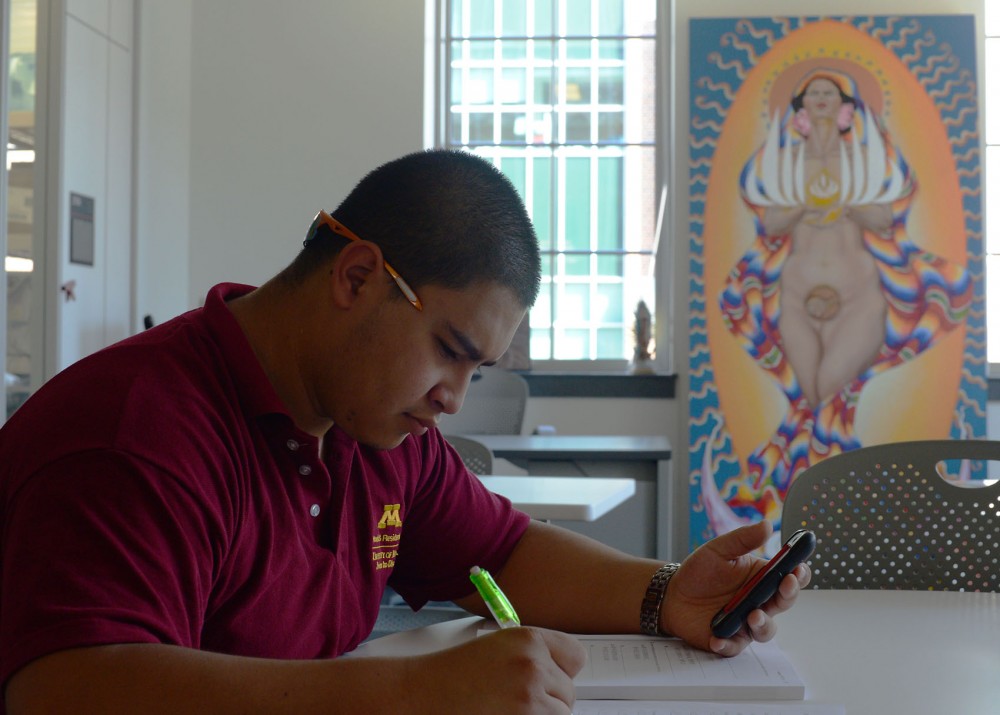Until last spring, one wall of the Black Student Union’s corner office in the University of Minnesota’s Coffman Union displayed a vivid depiction of the 1969 Morrill Hall takeover — a protest that played a huge role in the group’s growth.
“It brought character to the space in the way that white walls can never do,” said BSU President Amber Jones. The mural — showing a protest that sparked creation of the University’s African-American and African Studies department — was a great conversation starter and a lesson in “local, relevant” history, she said.
With last summer’s renovation of Coffman’s second floor, student groups and cultural centers that previously held space lost their murals, many of which were painted by alumni and had been on the walls for years.
Because it would cost too much to preserve the original murals during the renovation process, high-resolution photos were taken of each one, said Student Unions and Activities Director Maggie Towle. The photos are now displayed on a touch-screen TV on the west side of the floor.
For now, no painting is allowed on second floor walls unless it’s done with University approval.
Though the groups have a few options for personalizing their spaces after the renovation — painting canvases or panels to put on the walls, for example — some members say they’re too temporary.
“It makes it seem like we’d be easily removed,” said Asian-American Student Union officer Sydney Tran.
Offices on the second floor were redesigned to be semi-permanent. Every two years, groups will be evaluated to determine if they get to keep their space.
But Towle said because the cultural centers with space on the second floor are well-established in Coffman, she doesn’t expect them to leave.
“They’re strong groups,” she said. “I really don’t anticipate that there’ll be much turnover in their space.”
La Raza Student Cultural Center officer Daisy Hidalgo said La Raza’s murals were important because they helped the group make its mark on the University community.
Many alumni came to negotiations about the fate of the murals, she said.
“With the [University] being so big, you kind of want to find your own space,” Hidalgo said, “especially since the majority of the students here are white.”
Keeping the spirit alive
Jones said the spirit of the second floor is “disrupted” right now because of the new layout and the “business vibe” of the space.
One way to fix this would be to put small pieces of artwork along the walls of the main hallway, she said.
“We have to come together and find a way to make sure we still keep that spirit alive throughout the entire floor regardless of where we’ve been relocated,” she said.
But the groups can’t make any big decisions until the Second Floor Advisory Committee creates a standard process for personalizing the space, Jones said.
“Not everyone [welcomes] change, but it’s always inevitable, and it keeps us on our toes,” she said. “It keeps us thinking about the next innovative thing to do with our organization and our space.”


